Weeks commencing 4, 11 and 18 January 2021
As the Covid situation developed after Christmas fewer volunteers were making themselves available until eventually we could only support one day working on the loco. However, work has still progressed by our volunteers in their home workshops.
The left boiler cladding panels have been measured and the steel ordered. It is planned to replace two, but there will be more bottom edges to do. It was planned to repair by welding in sections but this is time consuming and has not given satisfactory results when tried. We haven’t used our usual supplier as there is a national shortage of sheet steel in the width that we need.
While measuring the cladding the left-hand trailing cylinder fairing was also measured as this was damaged and for the cost it is planned to get a new one profiled. We don’t have drawings of the alterations made to the streamlining when it was reduced during the Second World War. If anybody does please let me know. Before you send me photocopies of drawings from the railway modeller—they aren’t really suitable, I need dimensions.
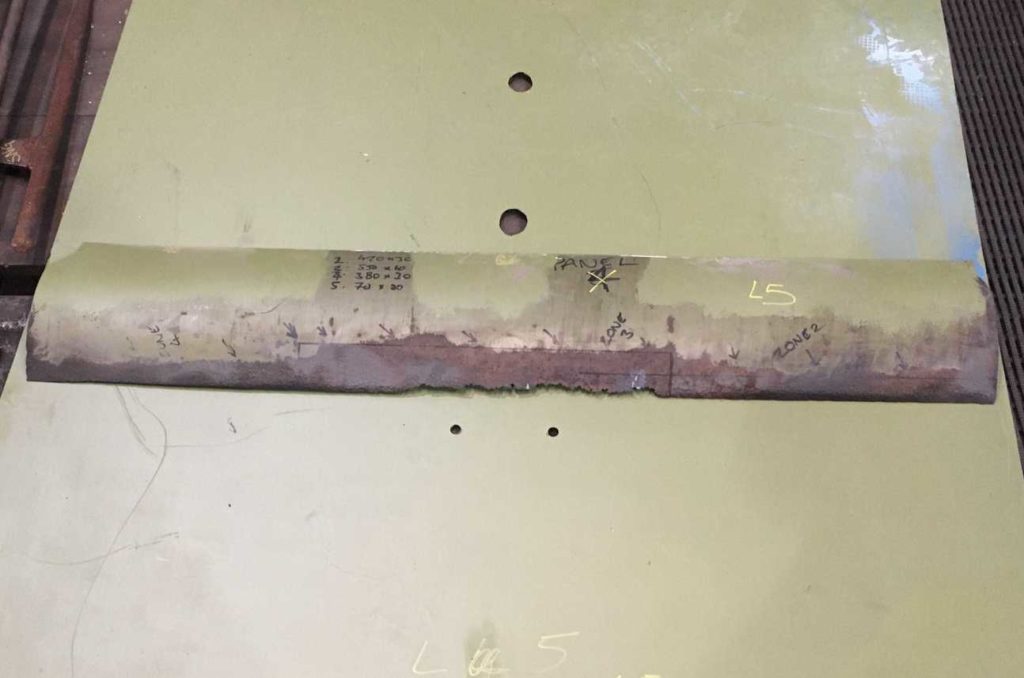
The last loose corners on the belly cladding has been rivetted.
The cast iron steam pipes have now all been drilled and tapped for their lubrication connections on the large Asquith radial drill.
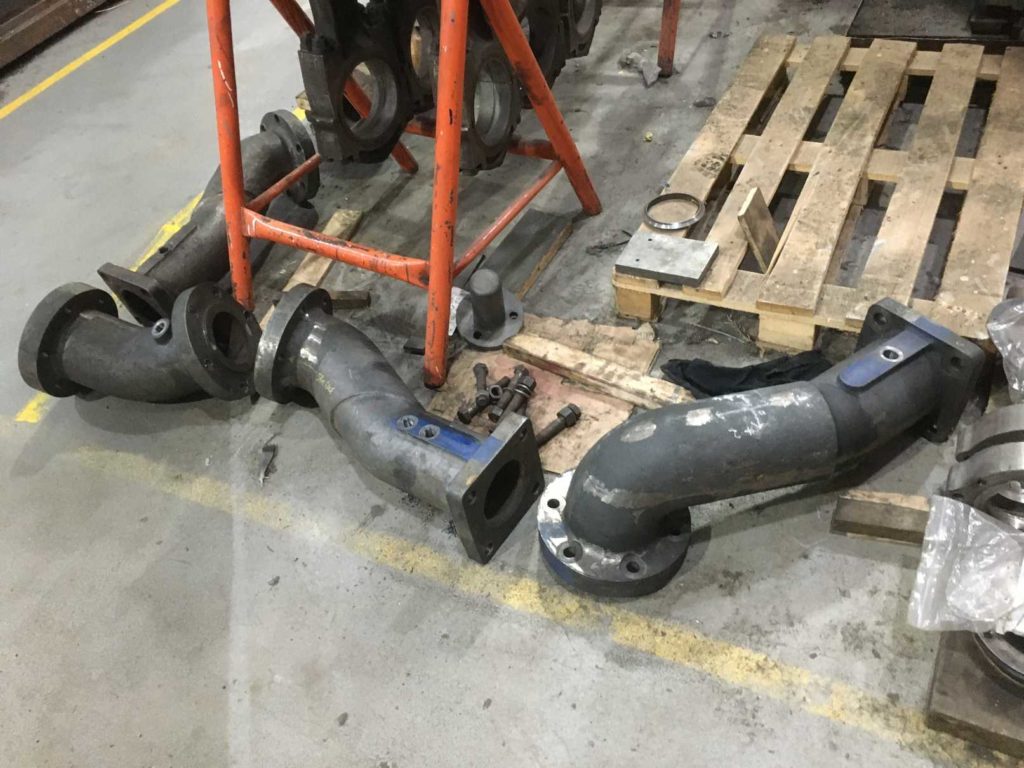
Work continued on the front end lube pipes that are to be reused. The pipes are being annealed and also being re-ended where necessary. Further material has been bought to make more cone ends.
A new end and nut has been made for the atomiser steam supply stub pipe located in the smokebox mounted on the boiler front tubeplate.
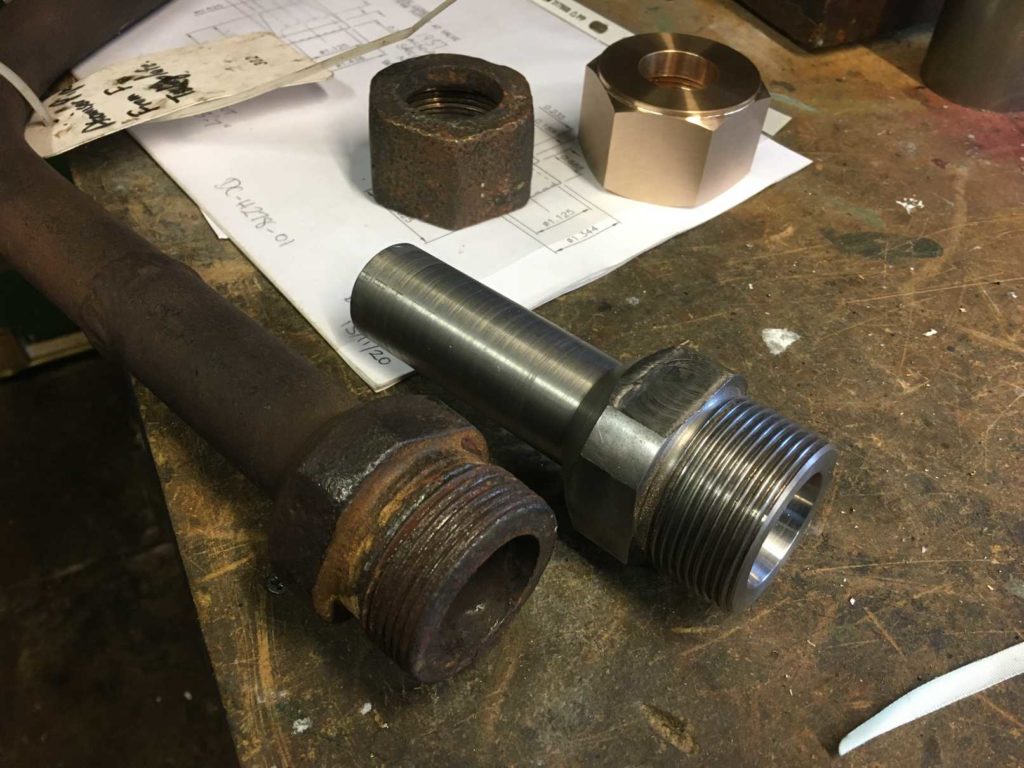
Now all the brake pull rods have been bushed they have also been painted to undercoat on the bench. They will be finished painted when fitted as they are bound to get a few knocks. Woe betide anybody using them as a climbing frame.
The first of the brake linkage components has been fitted. These swing links support the pulls that connect the large brake cylinder to the leading brakeshaft.
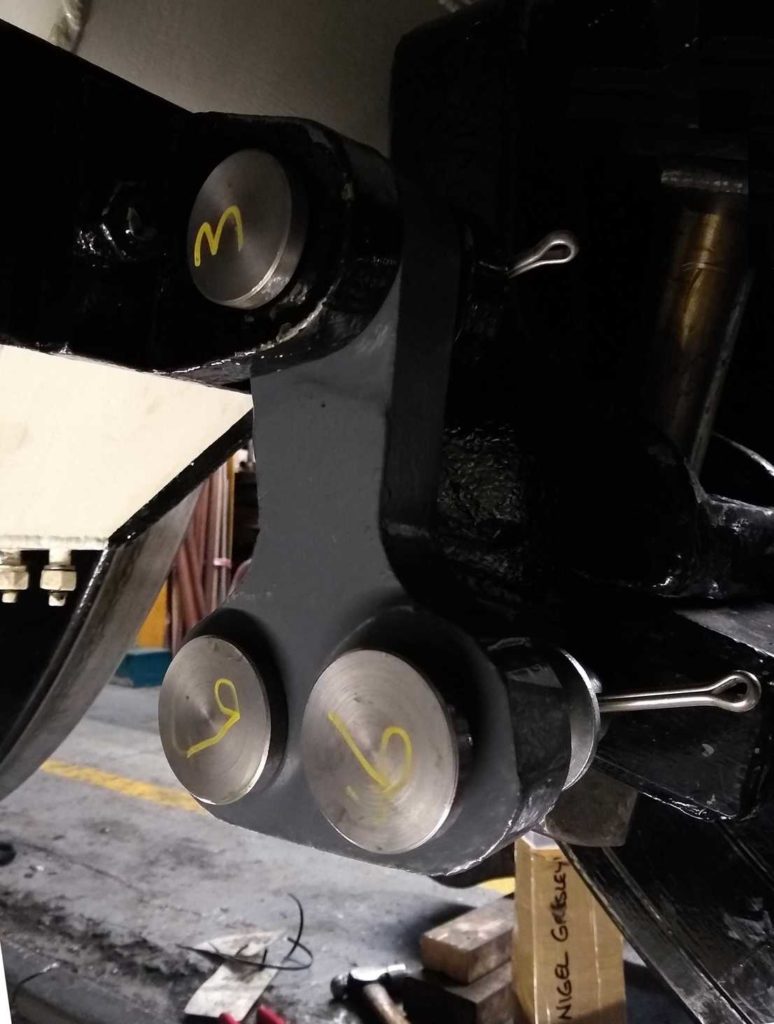
Most of the brake pins are 1-3/8″ diameter, with some at 1-7/16″. They are fitted with a washer but washers in these sizes are not available, or I couldn’t find any. The sizes being made non-standard. So metric washers were bought and machined to size.
The brakeshaft bearings have been finished and have all been trial fitted. This required the housings in the loco to be dressed to return them to round to provide a better fit for the bearings.
The bolts for the bearings will be renewed. Bolt blanks, cheap compared to finished bolts, were bought and are with an Engineering Team volunteer for machining to the LNER drawing.
Work has been done previously on the re-bushing of the loco brake hangers but this was not completed. Work has now recommenced on re-bushing them. The first has been put up on the Cincinnati milling machine on a jig, and has had it’s upper end hole skimmed true to the centre of the lower end hole. This will remove any twist from the hangers that was noticed when they were examined. The lower ends take the brake tables, which have had their trunnions rebuilt and machined true.
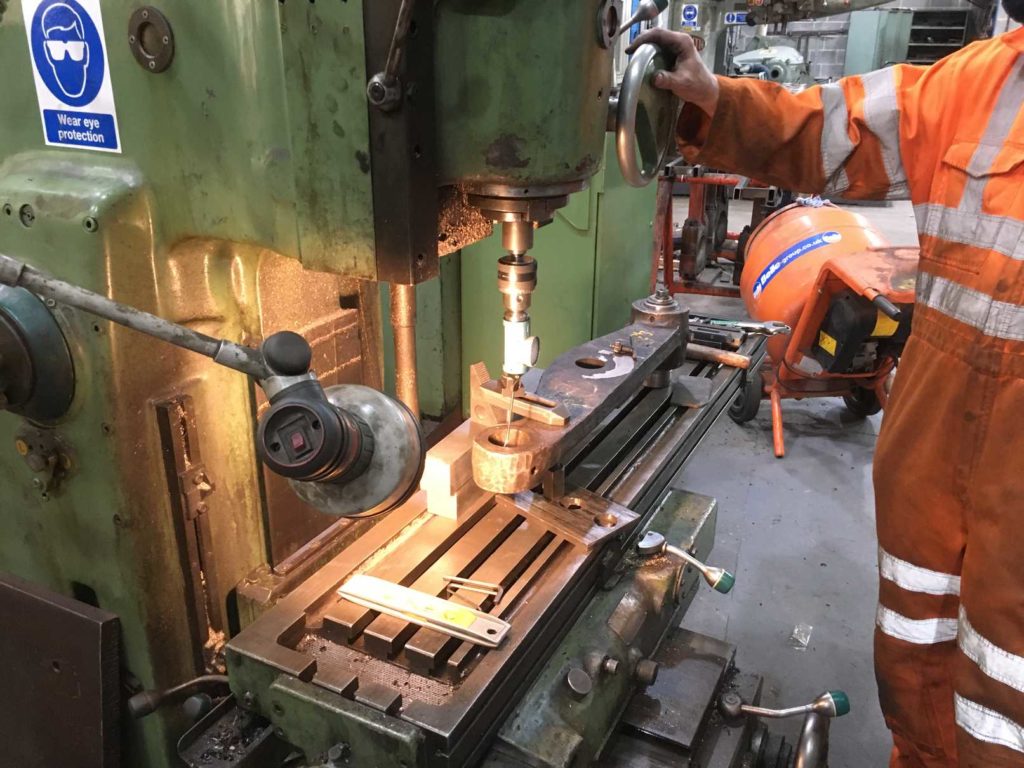
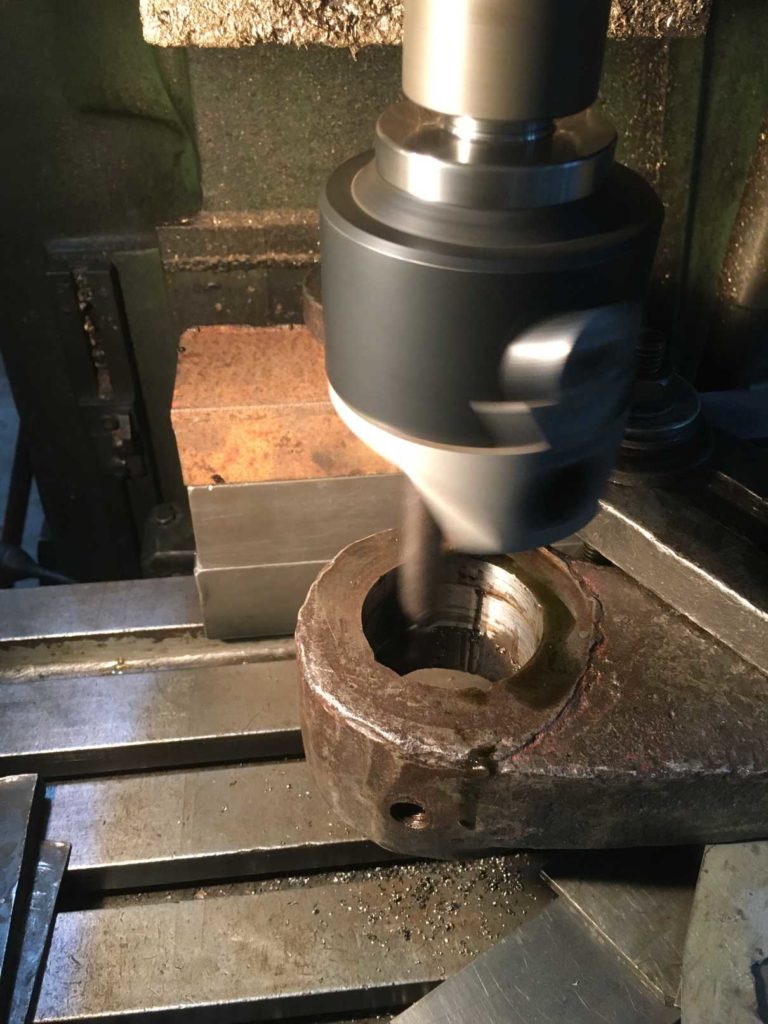
The middle little end keyway in the middle connecting rod has been finished and the keys trial fitted in all 3 connecting rods. The keys being machined and finished by one of our volunteers.
The 1 to 1 lever has been fitted in to the 2 to 1 lever. This required careful filing of a bearing bush in the 2 to 1 lever as the 1 to 1 lever now has a dust cover to original specification and is a little higher as a result.
The LH union link has now been bored true, through the combination lever pin hole.
The machining of the trailing crossheads has been completed by one of our volunteers. Now the leading valve crossheads are underway. This requires a jig to be made to locate them on the valve spindle hole so that the surfaces of the crossheads can be accurately machined. This was done with the trailing crossheads but the leading valve spindle holes are different from the trailing so the setup cannot be reused.
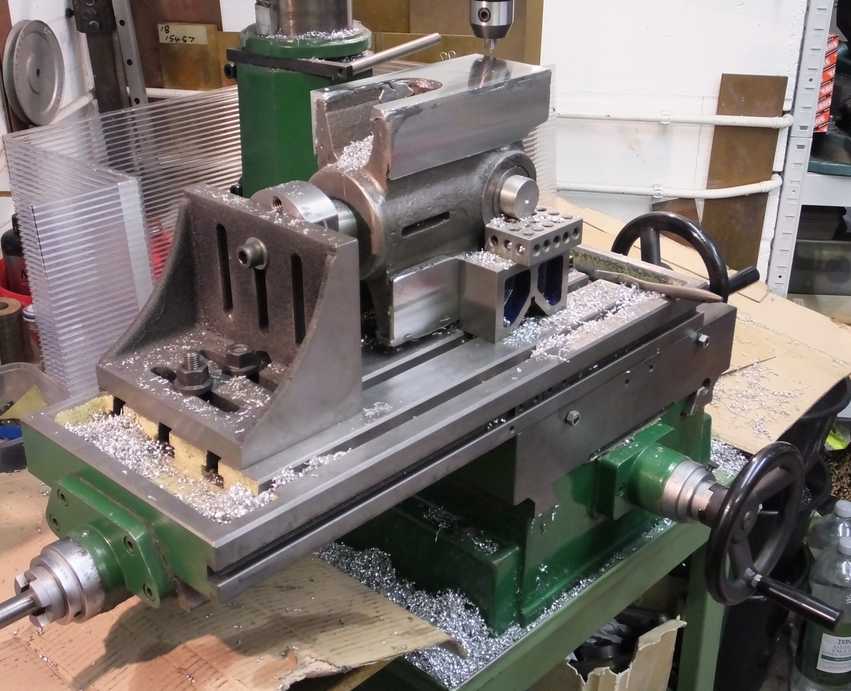
There was a gap between the tender vestibule floor plate and sides which wouldn’t close up when bolted. So shim plates to fill the gap have been made and fitted.
The shortening and refitting of the bolts for the tender right guard iron, to ensure they will not contact the left trailing brake hanger, has been finished.
The handbrake shaft was tried through the tender floorplate and lines up satisfactorily with the brakeshaft. While working on the tender floorplate the cab area has been measured up for floor boards.
The cotters for the Cartazzi hangers were fabricated and machined to thickness and are now being fitted to the Cartazzi hangers and top nuts in a home workshop.
The Cartazzi bearing that required extra whitemetal adding to it’s ends has been collected from contractors and delivered to the machinist.
The new liners for the trailing Cartazzi horns have finally been collected from suppliers. These were months overdue, the first batch were made out of the wrong material so were rejected, so it was good to hear they were finally ready. They are now being machined to size and then will be fitted to the loco. They require machining as they can’t be pressed with sufficient accuracy to provide a good fit on the loco and provide the correct overall width to suit the axlebox. They will then need welding on.
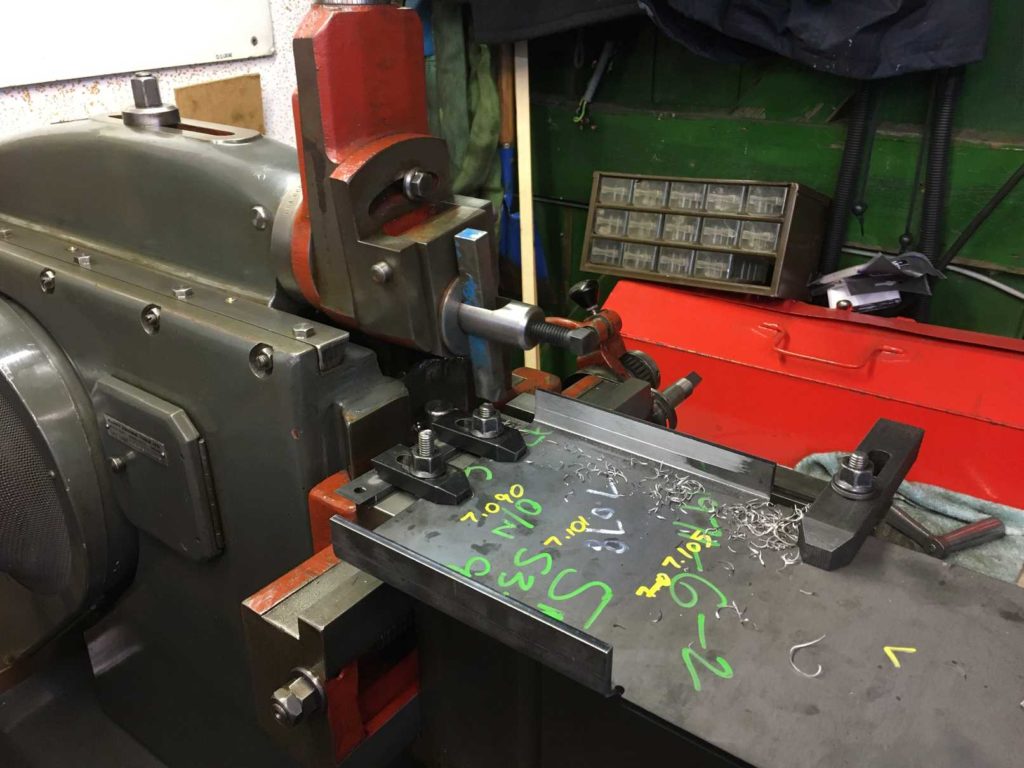
Getting the steel steam pipes welded has proved to be more of a challenge than was expected. A number of contractors were asked to quote but most were either uninterested or could not give adequate assurance that the pipe ends would end up where we wanted them. Which is the whole point of the job. As the pipes are live steam and part of the insured locomotive, the insurance company was kept informed, and when a contractor was finally selected their documents were sent to the insurance company. The insurer decided that a new contract should be started for this job and a quote was supplied. Now the insurance company want more money for the job than the welders! Don’t tell the welders. I’ve had a conversation with the insurers and they are reviewing the quotation. If this is how they are going to handle repairs it’s a major change of approach and will be very expensive for us and anybody else in our business.
After examination of the coach as reported in the last update, it was lowered back on to it’s bogies and moved outside, while we waited for the design for the new Controlled Emissions Toilet. It had been planned or the SNG Operations Team to go and sheet the coach but at the time it was postponed due to a bad weather forecast. This was rapidly followed by lockdown which has put a stop on the job for now. This is a shame as the visit was also for planning the fitting out the workshop and kitchen.
The design proposal for the CET has now been received and we examining it before a purchase order is placed.
